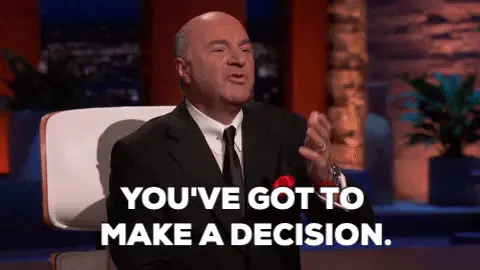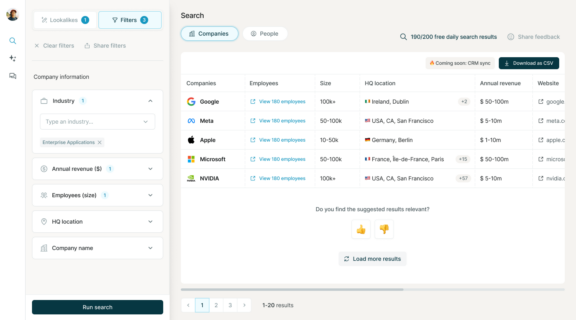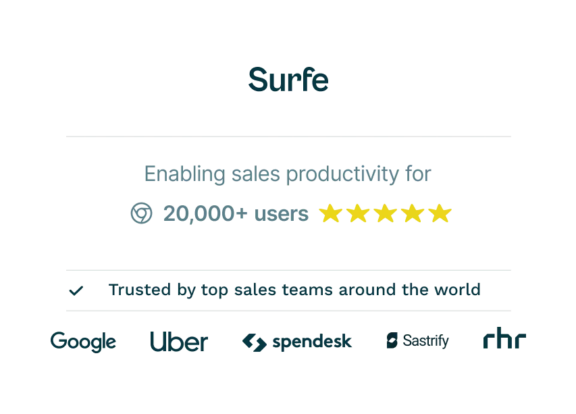Navigating the Buying Cycle of Healthcare Executives

In the healthcare industry, the decisions made by top executives can have far-reaching consequences, affecting patient outcomes, regulatory compliance, and the overall success of their organizations. Understanding the buying cycle that these executives go through is crucial for any sales professional looking to make an impact and make their targets.
But when you know how to spot the executive buying signals, you can align your sales strategies with your prospects’ timings to increase your chances of closing deals and building long-term relationships.
Keen to find out how? In this article, we’ll cover:
Defining the Buying Cycle
The buying cycle is the name given to the sequential stages that buyers—especially top healthcare executives—go through from the moment they identify a need until they evaluate a purchase post-implementation. In healthcare, this cycle is particularly complex due to the high stakes involved in decision-making. Every purchase, whether it’s for medical equipment, a new IT system, or a service provider, must be carefully weighed against factors like patient safety, compliance with regulations, and cost-effectiveness.
In the healthcare industry, decisions are rarely made on a whim. The buying cycle here is extended and multifaceted, involving numerous stakeholders who each bring their own set of priorities to the table.
The Stages of the Buying Cycle
1. Awareness Stage: Recognizing the Need
The buying cycle begins when a healthcare executive becomes aware of a problem or a need that must be addressed. This could be triggered by internal assessments, regulatory changes, or emerging industry trends.
Example: Consider a hospital’s Chief Medical Officer (CMO) who realizes that their current patient monitoring system is outdated, leading to potential risks in patient care. This awareness marks the beginning of the search for a more advanced, reliable system.
2. Consideration Stage: Exploring Solutions
After identifying a need, the executive moves on to exploring potential solutions. This stage involves gathering information, consulting with peers, and reviewing industry reports.
Example: The CMO, now aware of the need for an upgraded patient monitoring system, begins researching different technologies, reading up on the latest advancements in medical devices, and consulting with other hospitals to learn about their experiences with similar upgrades.
3. Evaluation Stage: Comparing Options
In the evaluation stage, the executive compares various solutions, weighing the pros and cons of each based on factors such as cost, functionality, ease of integration, and vendor reputation.
Example: The CMO narrows down the options to a few vendors that offer advanced monitoring systems. At this point, they might request demos, ask for detailed product specifications, and involve the IT department to assess how each system would integrate with existing hospital infrastructure.
4.Decision Stage: Making the Final Choice
After thorough evaluation, the executive makes the final purchasing decision. This stage often involves negotiations, obtaining budget approvals, and aligning all stakeholders.
Example: The CMO decides on a particular monitoring system that meets all the hospital’s needs. They finalize the terms with the vendor, ensuring that the pricing is transparent and the installation timeline aligns with the hospital’s operational goals.
5. Post-Purchase Stage: Assessing the Impact
The cycle concludes with the post-purchase stage, where the executive assesses whether the solution meets expectations and identifies any areas for improvement.
Example: Following the installation of the new monitoring system, the CMO and their team evaluate its performance. They gather feedback from the nursing staff, ensure that the system is operating as expected, and monitor patient outcomes to measure the impact of the new technology.
An average of 7 decision-makers are now involved in the B2B buying process.

How to Read Executive Signals
To effectively navigate the buying cycle, you must be able to identify which stage an executive is in. This requires a keen understanding of the signals that executives give off, which can often be subtle and require careful interpretation.
- Conversations: During discussions, the type of questions an executive asks can indicate their stage in the buying cycle. For example, if they are asking broad questions about emerging healthcare technologies, they are likely in the Awareness stage. In contrast, detailed queries about specific product capabilities suggest they are in the Evaluation stage.
- Content Engagement: The way an executive interacts with your content provides valuable insights. For instance, frequent visits to your case studies or requests for product demos indicate they are actively considering solutions, likely positioning them in the Consideration or Evaluation stage.
- Buyer Intent Data: Leveraging data on an executive’s online behavior, such as the types of articles they read or the keywords they search for, can offer clues about their current stage in the buying cycle. This data is especially useful in identifying when they have moved from general interest to active consideration.
Tools and Techniques for Stage Identification
To accurately determine where an executive is in their buying journey, consider employing the following tools and techniques:
- CRM Systems: Customer Relationship Management (CRM) systems are essential for tracking interactions with healthcare executives. By logging every touchpoint, you can create a detailed map of the executive’s journey through the buying cycle, helping you to tailor your approach accordingly.
- Buyer Intent Data Platforms: These platforms track online behavior, providing insights into what healthcare executives are researching and which solutions they are considering. For example, if an executive is frequently visiting pages related to healthcare compliance software, it’s a strong indicator they are in the Consideration stage.
- Analytics Tools: Utilize analytics tools to monitor how healthcare executives engage with your content. By analyzing metrics like time spent on specific pages or frequency of downloads, you can gauge their level of interest and the stage of the buying cycle they are in.
- Account-Based Marketing (ABM): ABM is particularly effective in the healthcare sector, where decisions are complex and involve multiple stakeholders. By focusing on specific accounts and tracking the progression of each executive through the buying cycle, you can deliver highly personalized content and communication that aligns with their current needs.

Aligning Your Sales Strategy with Each Stage
Awareness Stage: Establishing Thought Leadership and Credibility
In the Awareness stage, your goal is to generate interest and establish your credibility as a trusted resource in the healthcare industry. At this point, executives are just beginning to recognize a need, so your focus should be on educating them and building awareness of potential solutions.
- Thought Leadership Content: Create and share content that highlights your expertise in healthcare. For example, publishing a white paper on the latest trends in telemedicine or writing a blog post about the challenges of complying with new healthcare regulations can capture the attention of healthcare executives at the Awareness stage.
- Social Selling: Engage with healthcare executives on professional platforms like LinkedIn. Share relevant insights, comment on industry discussions, and build relationships by positioning yourself as a knowledgeable and credible source.
Consideration Stage: Presenting Viable Solutions
In the Consideration stage, executives are actively exploring solutions. Your goal is to position your product or service as a strong option that addresses their specific needs.
- Case Studies and White Papers: Provide in-depth case studies that showcase how your solution has successfully addressed similar challenges in other healthcare organizations. For instance, a case study detailing how your hospital management software improved operational efficiency at a large healthcare system can be very persuasive.
- Direct Communication: Engage in direct communication through webinars, personalized emails, or one-on-one meetings. This allows you to delve deeper into the executive’s specific needs and explain how your solution can meet them.
Evaluation Stage: Differentiating Your Solution
During the Evaluation stage, the executive is comparing different options and vendors. Your goal is to differentiate your offering by highlighting its unique value and addressing any potential objections.
- Tailored Demos: Offer personalized demonstrations that focus on the specific needs of the healthcare executive. For example, if you’re selling an EHR system, demonstrate how it integrates with other hospital systems and supports compliance with healthcare regulations.
- ROI Analysis: Provide a detailed return on investment (ROI) analysis that shows how your solution can lead to cost savings, improved patient outcomes, or enhanced operational efficiency. Healthcare executives are particularly focused on measurable outcomes, so emphasize the tangible benefits your solution offers.
- Testimonials and Success Stories: Share testimonials and success stories from other healthcare organizations that have implemented your solution. Real-world examples are powerful tools in the Evaluation stage, as they provide reassurance that your product or service delivers on its promises.
Decision Stage: Streamlining the Purchase Process
In the Decision stage, the executive is ready to make a final choice. Your objective is to facilitate a smooth purchasing process by removing any barriers to decision-making.
- Clear Pricing and Terms: Offer transparent pricing with straightforward contract terms. Healthcare executives value clarity, especially when it comes to financial commitments, so avoid any hidden fees or complicated terms.
- Stakeholder Alignment: Ensure that all relevant stakeholders are aligned and that any concerns are addressed. In healthcare, decisions often involve multiple departments, so it’s important to communicate effectively with all parties involved.
Post-Purchase Stage: Ensuring Long-Term Satisfaction
The Post-Purchase stage is where you solidify your relationship with the healthcare executive and lay the foundation for future business opportunities.
- Onboarding and Training: Provide comprehensive onboarding and training to ensure that the executive’s team can fully utilize the product or service. This could include training sessions, user manuals, and ongoing customer support.
- Regular Follow-Ups: Conduct regular follow-ups to gather feedback and address any issues that may arise. This not only helps ensure the executive’s satisfaction but also opens the door for upselling or cross-selling opportunities.
Overcoming Common Challenges in the Healthcare Buying Cycle
Challenge 1: Extended Buying Cycles
The complexity of healthcare decision making often leads to extended buying cycles, which can be frustrating for sales professionals. Keeping the momentum going is crucial.
- Strategy: Stay engaged by providing ongoing value throughout the buying cycle. This could be through regular updates on industry trends, offering new insights, or simply checking in to see how the executive’s needs are evolving.
Challenge 2: Multiple Decision-Makers
Healthcare decisions typically involve a variety of stakeholders, from clinical leaders to IT and finance executives, each with their own priorities.
- Strategy: Develop a stakeholder map to understand who the key decision-makers are and what their concerns might be. Tailor your messaging to address the specific needs of each group, ensuring your solution appeals to all involved parties.
Challenge 3: Regulatory and Compliance Considerations
Healthcare is one of the most regulated industries, and compliance is a critical concern for executives.
- Strategy: Position your solution as not only compliant with regulations but also as a tool that can help the organization stay ahead of compliance requirements. Provide documentation and case studies that highlight your solution’s track record in supporting regulatory compliance.
The biggest challenge
The biggest challenge (not just in the healthcare industry but in sales as a whole) is identifying target accounts and then finding the decision-makers. Luckily, Surfe is here to help you do this in seconds. You can use Surfe to search for companies based on advanced filters. But we’re also introducing a lookalikes feature which allows you to find companies similar to those you’ve already closed deals with. We will then identify the decision makers in those companies for you and find their validated email address and mobile number so you can begin your outreach.

Adapting to Changing Buying Cycles in Healthcare
Monitoring and Adjusting Your Approach
The healthcare buying cycle is dynamic and can be influenced by external factors such as new regulations, economic shifts, or technological advancements. Continuously monitor the executive’s progress and be prepared to adjust your approach. Stay informed about changes in the healthcare landscape and be ready to pivot your strategy to address new challenges or capitalize on emerging opportunities.
Use Feedback to Stay on the Front Foot
Collecting feedback at each stage of the buying cycle is essential for refining your approach and improving future engagements. Use feedback to fine-tune your sales process. For example, if an executive appreciates a particular aspect of your solution, make it a standard part of your pitch. On the other hand, if there are concerns, address them proactively in future interactions.
Let’s Wrap it Up!
Mastering the buying cycle of healthcare executives is not just about understanding the stages they go through; it’s about aligning your sales strategy with their specific needs at each stage. By recognizing the signals, leveraging the right tools, and addressing the unique challenges of the healthcare industry, you can turn complex sales processes into structured, successful engagements. When you’re attuned to your prospects’ pain points and timelines, you’ll build lasting relationships and secure your position as a trusted partner who can help improve the efficiency and quality of care in the sector.

Ready to supercharge your sales outreach?
Surfe’s email finder can help you connect with top executives in the healthcare sector. And with a 93% find rate, you know your emails are reaching the right inboxes.
Frequently Asked Questions (FAQs)
Why is the buying cycle longer in the healthcare industry?
The buying cycle is extended due to the complexity of healthcare decisions, the involvement of multiple stakeholders, and stringent regulatory requirements.
How can I identify which stage a healthcare executive is in?
Look for signals such as the type of questions they ask, their content engagement, and buyer intent data.
What are the key challenges in selling to healthcare executives?
Extended buying cycles, multiple decision-makers, and regulatory considerations are some of the primary challenges.
How can I adapt my sales strategy to changing buying cycles?
Continuously monitor the executive’s progress, adjust your approach as needed, and stay flexible to respond to external factors.


